White Places – Black Holes
Congress Day 1
The first and second day of the congress will be devoted to a return to history, with analyses and criticisms of the ways in which regions have been preceived in the dominant history of art in past decades. To the present date the question has not been addressed: in the context of this history, how can the specific value and originality of the art of local scenes be defined, without applying a colonial or other distorted perspective? A special sub-theme will be devoted to Pierre Restany and his international activities, specifically his relations with central europe or other regions outside France.
Date: 24. 9.2013
Venues: Kasarne/Kulturpark, Kukučínova 2 , 040 01 Košice
8:00 AM
Registration
9:00 AM
Juraj Čarný, President of AICA Slovakia
9:15 AM
Ján Sudzina, Director of European Capital of Culture 2013, n.o.
9:20 AM
Marek Bartelik, President of AICA International
9:50 AM
Marjorie Allthorpe Guyton, Chair of Scientific Commission for 2013 Congress
10:00 AM
Piotr Piotrowski (PL)
Peripheries of the World Unite
In the paper author would like to present the differences of peripheral experience in art after 1945 around the world, as the common ground to challenge the mainstream art history, and at the same time to ask whether such a diversity, as well as critique coming from the peripheries, is able to create a political project, as sort of Peripheral International.
11:10 AM
László Beke (H)
In which sense art can be a black hole (on white place)?
In the contemporary relationship of art, criticism, art history and curatorship, one can find a time-space continuum. We are working with topological metaphors: context, framework, edges, mapping, so as white place and black holes. White space in my interpretation could be witd "hard edge" or without clear borderline, and black hole is any artwork wit infinite deepness of meanings. The time comes into the art systeme by the dialectics of past-present and future, id est art history and contemporary art . This theoretical introduction leeds to our situatiion: the contemporary art in the countries of Middle-East-Europe. Beke agrees with Piotr Piotrowski, in the sense we are living in global context but under post-communist conditions, and asks what can we do?
12:00 AM
Block Discussion
12:30-2:00 PM
Lunch
2:00 PM
Tomáš Pospiszyl (CZ)
The Great Return and the Therapy of Insufficient Self-reflection
The relationship of East European and world art arises from the overall concept of the Eastern European identity after 1989. After the fall of communist regimes, the ideology of the "Great Return" prevailed here, that is, the return of East Europe into the womb of Western civilisation. But East European desire to enter into world history of art has much deeper roots and reflects the mentality of the National Revival of the 19th century, i.e. the need to create a unique culture equal to other world cultures. I believe that the logic of art-historical research in Eastern Europe should take a different direction, stop looking for what could be put into the context of Western art and focus on the research of the official socialist art. The fate of the official art from the period of socialism is a proof of how East European art and thinking about it suffers from a total lack of self-reflection.
2:45 PM
Richard Gregor (SK)
The Homonymic Curtain
Usually we tend to see the period from 1948 to the early 1960s as a rupturing of the common history of European modernism, caused by the descent of the Iron Curtain. This paper offers a counter-view in 8 theses. The period is seen as an aftermath of that same art history, with the ideology of postwar renewal considered as the common denominator, and an attempt is made to grasp the specific character of the rise to prominence of the Central European neo-avantgarde by introducing the idea of “the homonymic curtain”.
3:30 PM
Beata Jablonská (SK)
White Space in White Space.
Even though in the time of its rise White Space in White Space (1973-1974) by three authors Stano Filko, Miloš Laky and Ján Zavarský has never been presented in Slovakia, today is an archetypal work of 1970’s artistic context in central Europe. Despite the fact it has been recorded in the conceptual art chapter its undisciplined nature “agent provocateur” somehow it has remained as an unfinishedstory of contemporary art history. If in the previous period the illusory conceptual inability to seize it and formal off-streamof The white space in the white space have been a disadvantageifcomparing with unequivocally defined categories of Euro-american concept, on the contrary today with the help of precise primary research of the work and the tools of contemporary critical art history we can offer the reconstruction of its “true story” as a unique act coming out of the concrete cultural and political contexts of central Europe.
4:00 PM
Discussion + Coffee Break
4:30 PM
Igor Spanjol (SLO)
Eastern Boys and Western Girls
Igor Zabel’s curatorial work, which strongly marked international cultural space, emerged from his critical view towards the systems of differentiation and exclusion, new divisions and strategies of the strong Western countries in preserving their dominant position in the global culture, and especially towards the growing role of multinational global capital, new structures of nobility and their exploitation of critical art.
5:10 PM
Andrzej Szczerski (PL)
“White hole” or how to escape from a black hole in three easy lessons
The lecture proposes to reverse the usual approach to Central Europe (and other non-canonical regions of world art map) as "black hole" and instead to look at it as "white hole". In modern astrophysics "white holes" are disscussed as places where new universe can begin. Hence Central European region can be seen as having its own artistic identity, which creates its own critical system and hence a new universe within the global art scene. Three proposals how to achieve it are put forward such as the study of region identity, discovery of critical methodology developed in the region, last but not least appreciation of global reception of Central European art and architecture.
5:40 PM
Katarzyna Jagodzińska (PL)
Go global or remain local – strategies for Central European contemporary art institutions
Central European contemporary art institutions, especially the most recent ones – fruits of the turn of the centuries building boom – are vaguely present in the international discourse and remain at the outskirts of European and world artistic interests. The paper refers to the geographical dimension of Central European museums and centres of contemporary art, and their struggle for becoming recognized in the Western world. Institutions are presented as drifting between locality and the West. The conclusion is that by trying to be Western they aredoomed to be peripheral, epigone and imitative (from the Western perspective), and to large extent “white places”.
6:00 PM
AICA Incentive Prize for Young Critics – Sebastian Baden (DE)
Musée Igor Balut: „Black Hole“-Installations blast into „White Places“
The MIB is a fictional museum and international artist collective with its Headquarter in a Squat at Rue Rivoli 59, Paris. Instead of being only ordinary artists, all members are designated co-directors that curate exhibitions with their own products and build „cockoo“-departments in host-institutions. MIB creates, copies and recycles artworks and suitable items which fit into suitcases. It’s in situ installations appear like „Black Holes“ when they fill in museum spaces. As it’s not about celebrity, MIB has literally taken „the Unknown Artist“ as a Leitmotif to mark the „White Place“ in the History of Art. Through the strategy of occupying and blasting space and media, MIB undermines general museum’s traditions and politics. Even Art Criticism is taken over by the „Critical Curartists“ themselves. My paper will outline the different artistic concepts of the Musée Igor Balut: It is the Name (and Trade Mark) of an Anti-Museum, the co-directors live a Post-Duchampian attitude and appropriate important icons from Art History. Any methodological reading of the MIB Style requires an approach that might be called „critical ironiconology“.
6:30 PM - 7:00 PM (approx.)
General First Congress Day Discussion
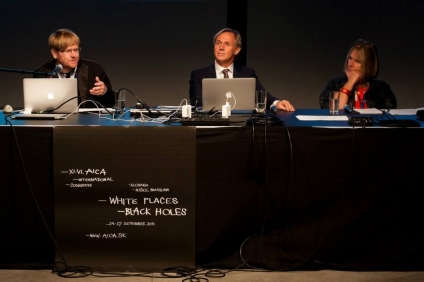
Welcome speech by J. Čarný,M. Bartelik and M. A. Guyton
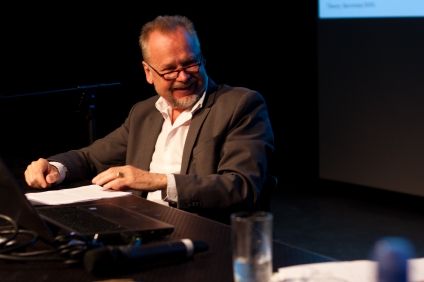
Piotr Piotrowski
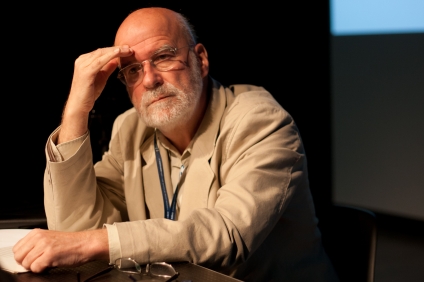
László Beke
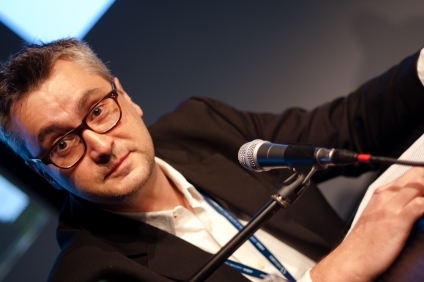
Tomas Pospiszyl
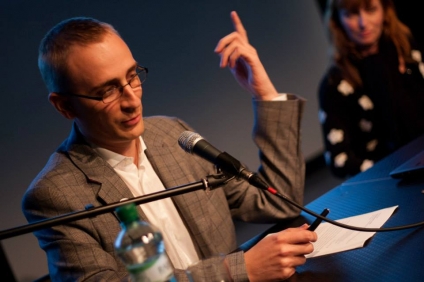
Richard Gregor
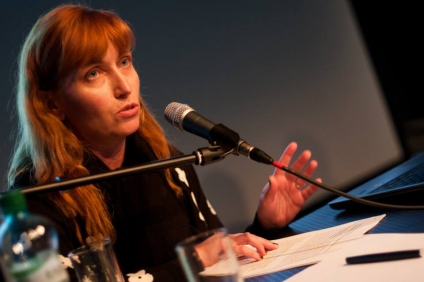
Beata Jablonská
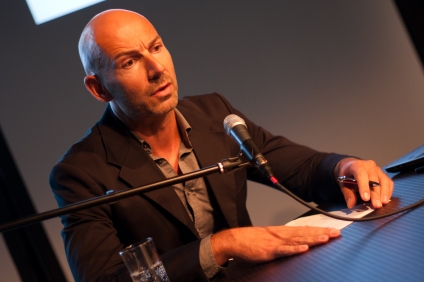
Igor Spanjol
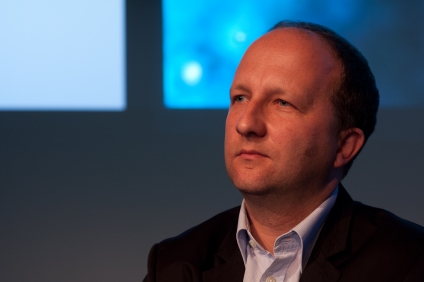
Andrzej Szczerski
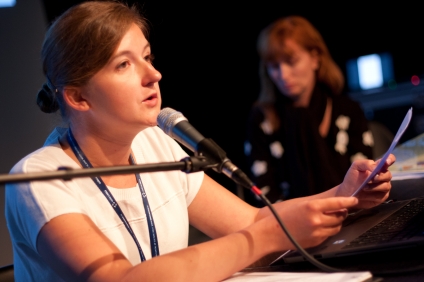
Katarzyna Jagodzińska
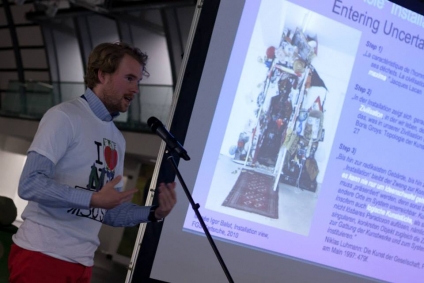
Sebastian Baden




